Umbellifers: The plants with 'bold structure' with soft, frothy flowers that have an ethereal quality
Their frothing flower heads and bold structure give a relaxed country feel to any garden, but John Hoyland — gardens advisor at Glyndebourne — says you must choose umbellifers carefully. Here’s his guide to the best.


Several years ago, the designer Cleve West won the Best in Show award at the Chelsea Flower Show with a garden full of sublime plant combinations and a little-known plant that caused garden mavens to swoon. Tall and elegant with stout pale-yellow stems and domes of zingy acid-yellow flowers, the majestic specimen was as unfamiliar to visitors as its name: Pastinaca sativa.
Most people were surprised to discover that the plant, a member of the umbellifer family, was a parsnip, which had been allowed to flower and had been dug up from Mr West’s allotment. The appeal of the flowering vegetable was the strong, clean architecture of its stems combined with the open airiness of its flowers. Today, umbellifers are still in vogue in show gardens: they are among the most recognisable and honest of the wildflowers of Britain.
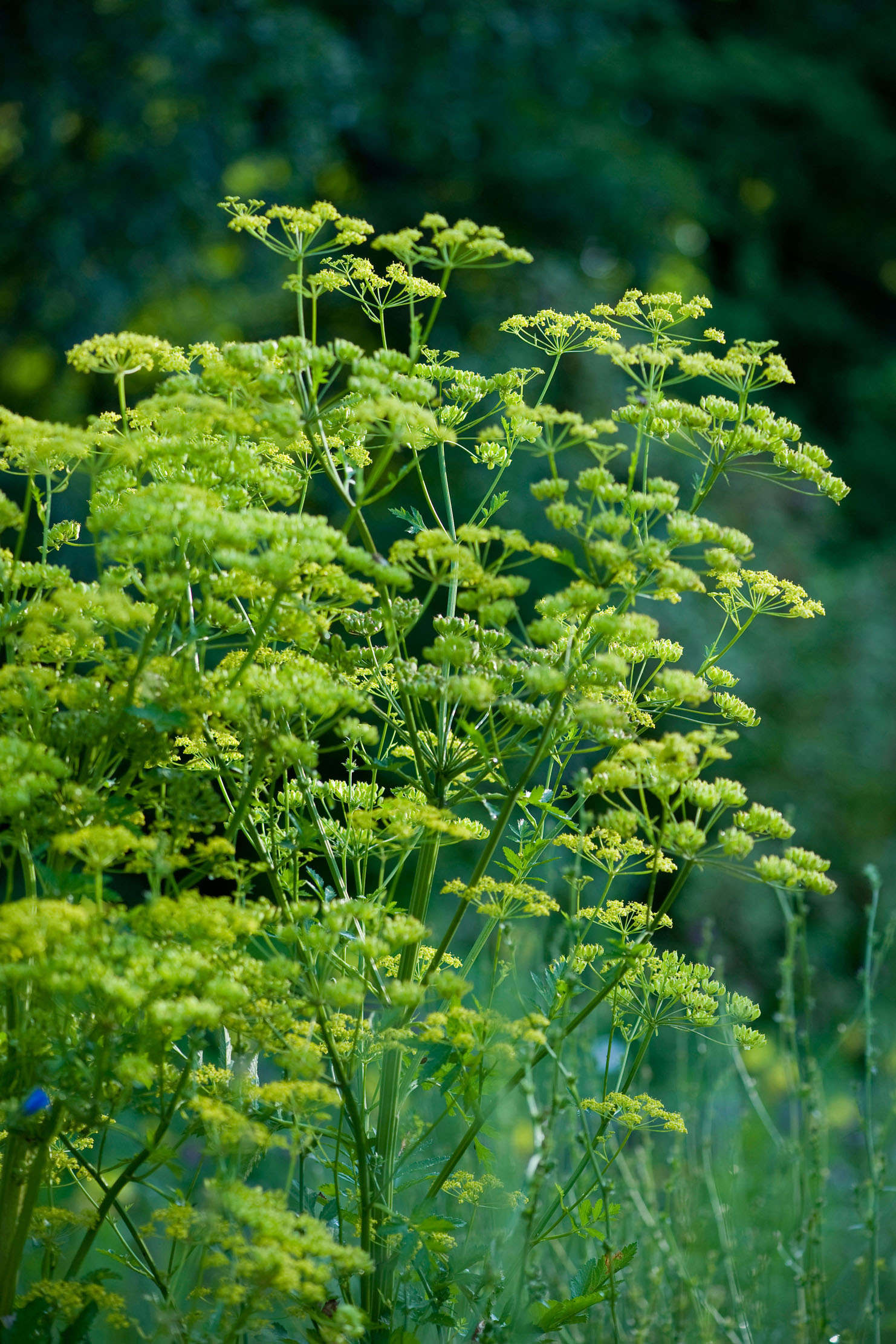
This alliance of a bold structure with soft, often frothy, flowers that have an ethereal quality is part of the attraction of all umbellifers. The family name refers to the blooms, which are parasols of tiny flowers clustered together, some forming flower heads that are nearly spherical, whereas others are flat-topped.
The umbellifers are a companionable family, easily mingling with other plants in relaxed, informal planting schemes and the densely packed structure of the flowers attracts bees, butterflies and other beneficial insects, which makes them great all-round garden plants. Botanists now refer to the family as Apiaceae, but most gardeners stick with the musicality of the descriptive name of Umbelliferae.
The most recognisable member of the family is our native cow parsley, Anthriscus sylvestris, and who isn’t moved by the sight in spring of its foam of white flowers spilling down country lanes, almost phosphorescent in the evening light on woodland fringes? But that is where it should stay: don’t be lured by its loveliness to give it a place in the garden (unless your garden has large wild areas that it can take over).

I once thought that having it grow around a few fruit trees would look charming, which it did. It is less appealing in the rest of the garden it has colonised. The form I planted has dark leaves, Anthriscus sylvestris ‘Ravenswing’, which has a reputation for being less invasive. It is not. If you do insist on growing it, remove the flowers before it can set seed and send down its deep, tenacious roots.
If you want to evoke the diaphanous clouds of cow parsley, consider Cenolophium denudatum. It is a more solid plant than anthriscus, with denser flower-heads that are not such a bright white. For an airier, gossamer umbel, look to the annual Ammi majus. It flowers in midsummer after getting to 4ft tall and its delicate, clear-white flowers have made it popular with flower arrangers. Ammi visnaga is slightly shorter and chunkier, with buds that are stained green before opening to white flowers. Daucus carota ‘Dara’, a cultivar of the wild carrot known in some areas as Queen Anne’s lace, has a similar habit, with flowers from June to September that range through tones of white, faded pink and burgundy.
Exquisite houses, the beauty of Nature, and how to get the most from your life, straight to your inbox.

The architectural character of umbellifers can be seen clearly in the common angelica, Angelica archangelica, a statuesque plant with branching stems topped by globes of pale green flowers. At 6ft tall, it is an imposing presence in early summer. Its Korean cousin, Angelica gigas, is a gorgeous plant, slightly shorter, with purple flushed stems and beetroot red flowers.
The whole plant of Angelica sylvestris ‘Vicar’s Mead’ is suffused with a dusky purple. It grows to 4ft tall and the purple buds open to lavender-pink flowers. The angelicas are biennial, flowering in their second year then dying, but usually leaving seedlings behind.
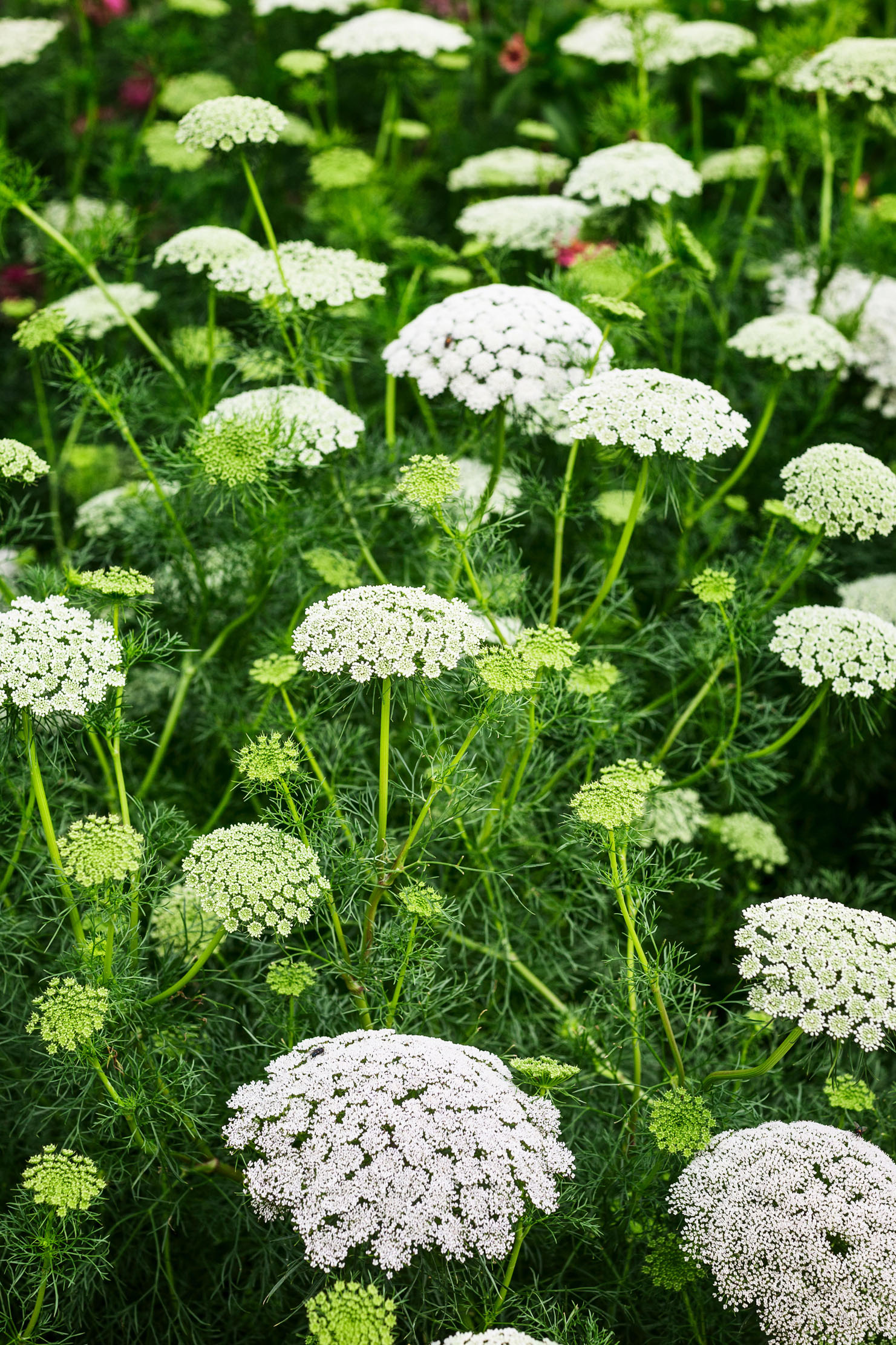
For me, the most sculptural member of the family is Seseli gummiferum, which has delicate silver-grey foliage on a thick stem, also reaching up to 4ft tall. It sends out arms, dancing, Shiva-like, in all directions; at the end of each, a tight white bud unfurls into a flat umbel of white stars.
The young flowers have a pinkish hue that is subtly echoed on the stem at the base of the leaves. The whole effect is one of subdued elegance. Some books suggest that it is commonly known as ‘moon carrot’. This is not a name I have ever heard spoken out loud, but it perfectly describes the silver-grey glow of the foliage, as if lit by moonlight.

As are many umbellifers, Seseli gummiferum is monocarpic, which is to say it might take a couple of years before flowering and then dies. Monocarpic plants, like biennials, tend to produce enough seed to ensure a few seedlings, but, unless your soil is very well drained, collect seed of the seseli and sow some in pots in the autumn. It thrives in sunny gardens with poor well-drained soil.
In a shady garden, grow Smyrnium perfoliatum, a wonderful biennial plant with bright chartreuse foliage that adds zing to gloomy places in May and June. Its sprays of tiny sulphur-yellow flowers appear in the second year. I know gardeners who complain it self-seeds abundantly. I don’t find that it does, but, if it becomes a problem in your garden, perhaps learn to live with it, as I have my cow parsley, and remind yourself each year of the charms that first drew you to it.
John Hoyland is gardens advisor at Glyndebourne, East Sussex
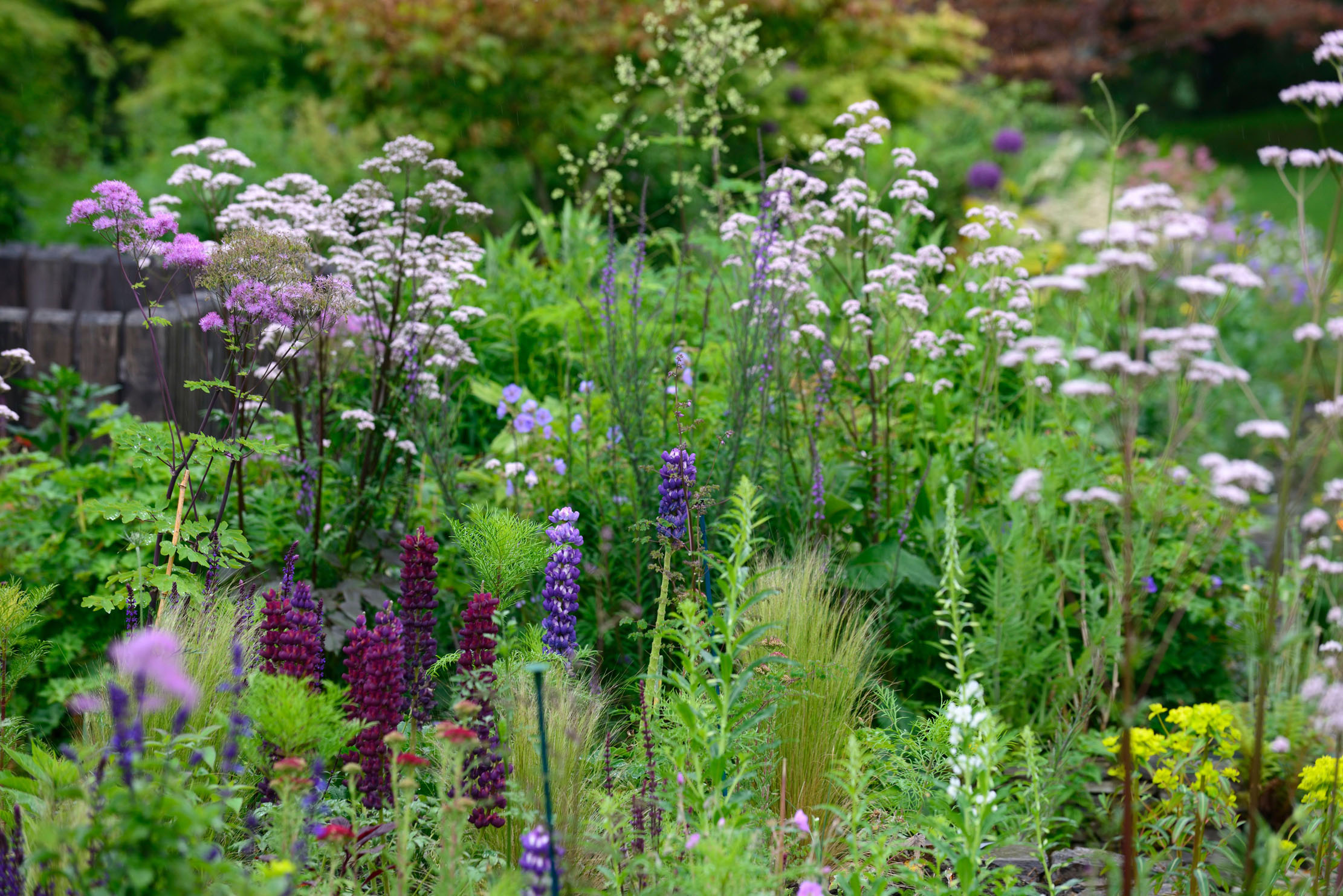
Six of the best Umbellifiers
Cenolophium denudatum
Flowering during Chelsea week has meant that this perennial has received a lot of attention as an alternative to cow parsley. In fact, it is a much gentler plant, with pale green buds and flowerheads, about 5in wide, that are a much softer white than its cousin’s. The stems are leafless and grow to about 3ft tall.
Selinum wallichianum
The writer E. A. Bowles famously referred to this plant as ‘the Queen of Umbellifers’. The deeply ribbed stems grow to about 3ft and branch out to hold tiers of domed flowers. The stems are a deep burgundy colour, which contrasts with the glistening white diaphanous flower heads. It is easy to understand why Bowles was smitten.
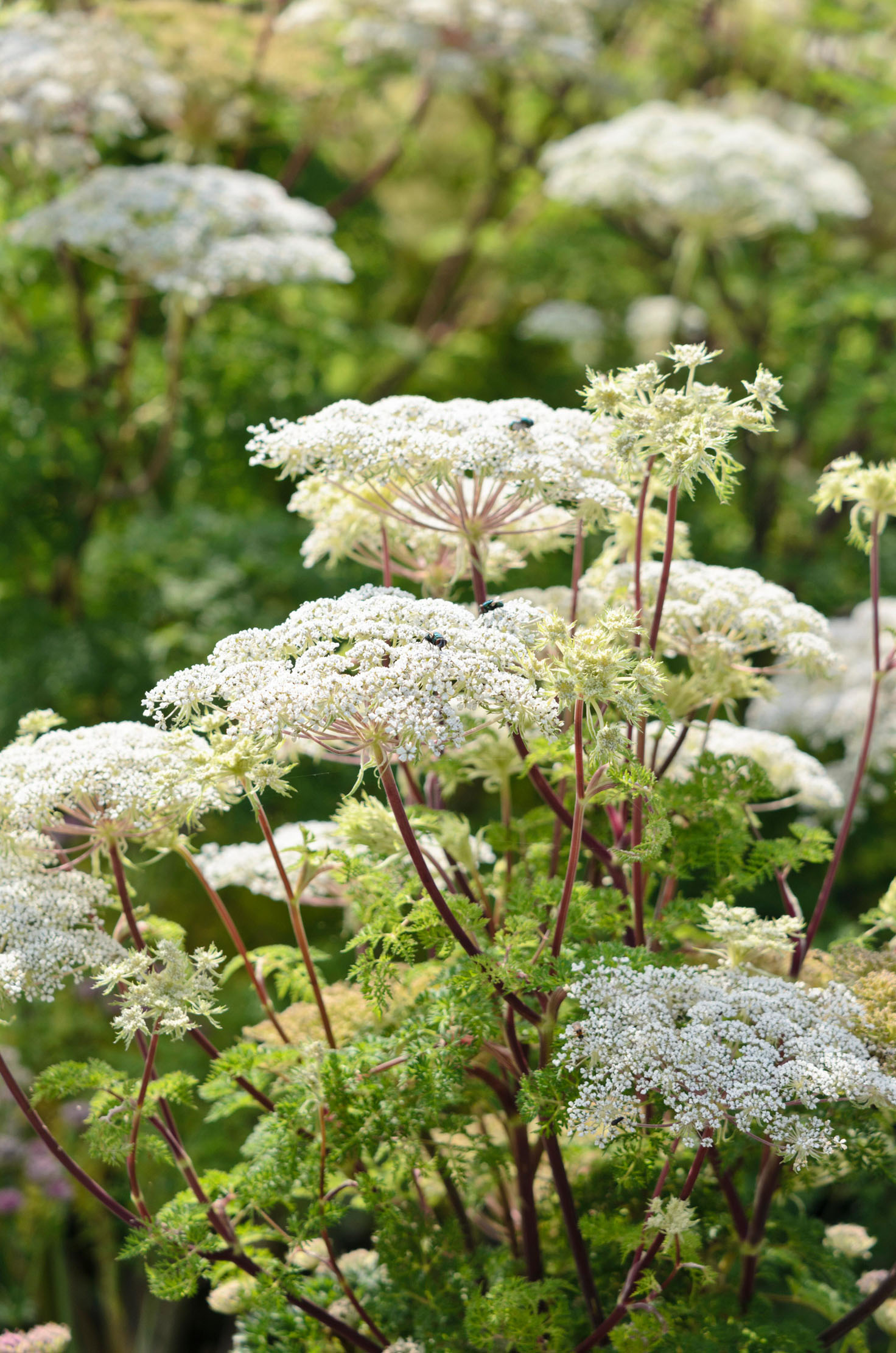
Orlaya grandiflora
A long-flowering annual plant that sparkles in the dry vineyards and olive groves of the Mediterranean, this has recently become popular with British gardeners. The bright-white flowers have an outer ring of enlarged petals that serve as landing pads for hoverflies and other insects. It grows about 2ft tall and will gently seed itself about.
Molopospermum peloponnesiacum
This is one of those plants worth growing for the sound of its name alone. The dark-green filigreed foliage looks newly polished and forms a neat mound about 3ft wide in early spring. Flower stems grow to about 4ft and support umbels of pale green, sometimes white, fragrant flowers. A plant that prefers some shade.
Ferula communis
The giant fennel can spend a couple of years summoning up the energy to launch its fat flower stem 10ft into the air. Its yellow umbels against a blue June sky is a glorious sight. The plant eventually dies from exhaustion, but usually leaves behind a few seedlings.
Myrrhis odorata
Probably the most delicate of the native British umbellifers, with soft, finely cut feathery foliage and sprays of creamy white flowers. The clusters of seeds look like tiny spindles and, like the rest of the plant, are edible and have the flavour of aniseed. It can grow to 4ft tall, but mostly it reaches about 3ft.
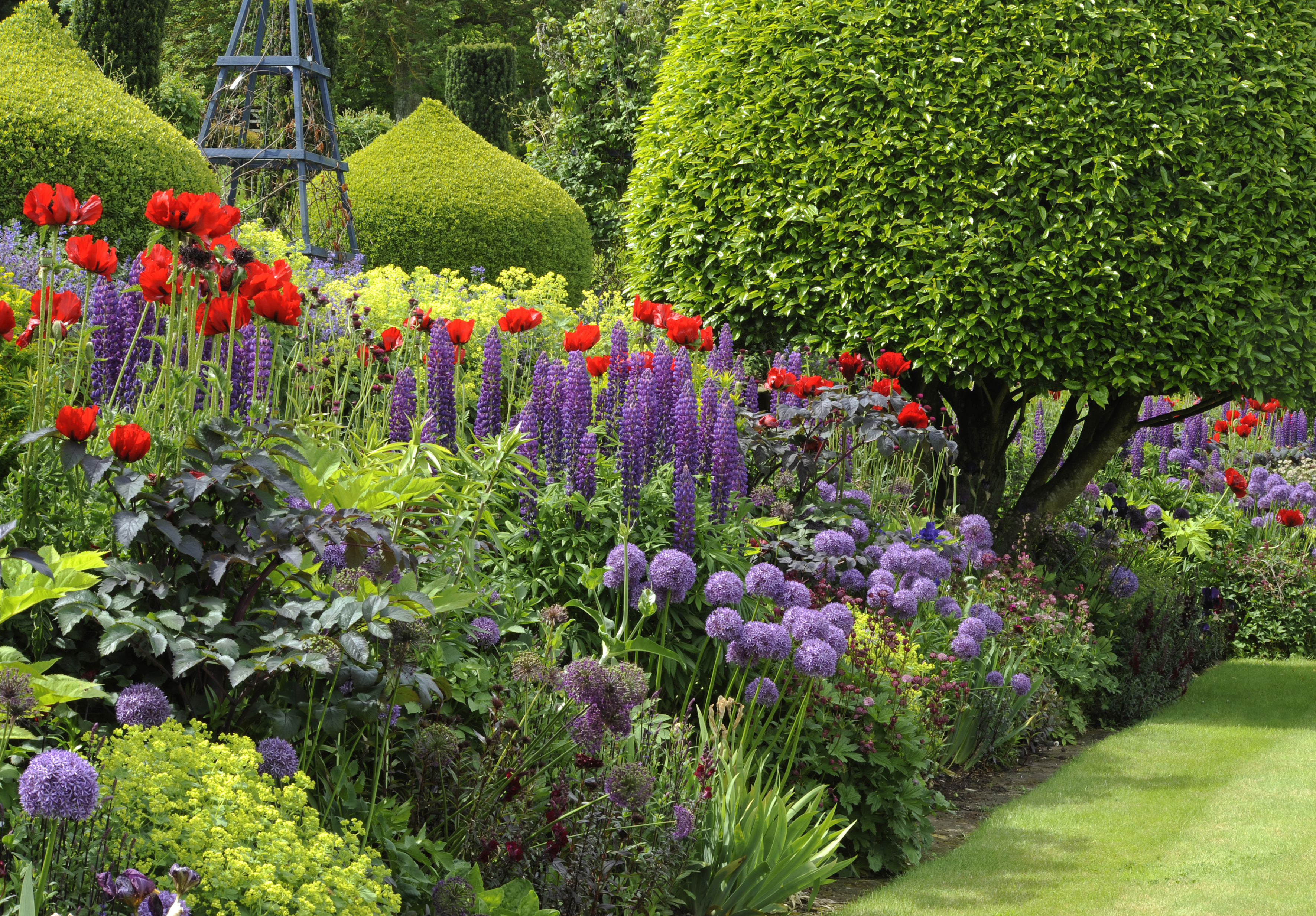
Why gardeners should keep buying plants online — and seven of the most trustworthy nurseries
Our nurseries and garden centres are among the many business facing a catastrophic spring and summer, just at the time

The futuristic house of cork, fitted together like Lego, where the skylights stop it from blowing away
A research project by architects Matthew Barnett Howland and Dido Milne created Cork House in Eton, Berkshire, an experimental home
Country Life is unlike any other magazine: the only glossy weekly on the newsstand and the only magazine that has been guest-edited by His Majesty The King not once, but twice. It is a celebration of modern rural life and all its diverse joys and pleasures — that was first published in Queen Victoria's Diamond Jubilee year. Our eclectic mixture of witty and informative content — from the most up-to-date property news and commentary and a coveted glimpse inside some of the UK's best houses and gardens, to gardening, the arts and interior design, written by experts in their field — still cannot be found in print or online, anywhere else.
